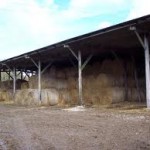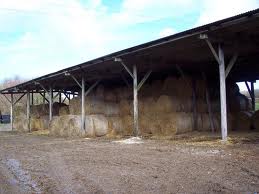 Constructing a pole barn has become a much simpler task today than it used to be. With tons of offered ready-to-use plans and blueprints, a homestead property owner could construct not just a pole barn of two (or even six horse stalls), but also include practical sheds for tractors, feed storage or shelters.
Constructing a pole barn has become a much simpler task today than it used to be. With tons of offered ready-to-use plans and blueprints, a homestead property owner could construct not just a pole barn of two (or even six horse stalls), but also include practical sheds for tractors, feed storage or shelters.
The plans can be utilized to develop other kinds of pole structures, including workshops, storage barns or garages. Simpleness, cost-cutting and sturdiness are the main considerations why individuals still make use of poles, the earliest construction strategy, to create straightforward buildings.
Poles have been used for centuries to raise huts and shelters all over the globe. Poles rooted in planet forming a frame for the covering material, be it animal skin, wood or metal, provided enough warmth and protection, and can be built very quickly from whatever materials were available. To develop pole barns, individuals still utilize this technique, which hasn’t changed much for many years. The products have altered however, and today pole barns are covered with aluminum, steel and other long lasting light-weight materials, with insulation and often wooden or brick facades.
Pole barns are becoming increasingly prominent on the homestead because they enable the structure of reliable shelter for pets or storage without money-consuming earth excavation, concrete foundations and basic land site interruption.
The most inexpensive means to begin building a pole barn is with a pole foundation. Pole foundation is really a pole that also serves as a framing member. Posts or poles are placed deep into ground so they can bear a lot of pressure, in some cases as deep as 10ft. However that’s practically all digging for the foundation that a pole barn builder can expect to do.
The pressure is distributed evenly around the pole, and the building becomes really steady and resilient. The builder could dig the holes himself or, if available, use a power auger. The poles are secured by a small amount of concrete poured into the holes. Obviously, this saves the homestead some cash and labor, as full concrete foundations can be somewhat expensive.
The pole foundation gives the construction a lot of versatility. A pole barn with pole foundation can be raised basically anywhere, even in locations where a traditional concrete foundation is not feasible, for instance, on a steep hill or wooded area. Thanks to the pole foundation, a pole barn could be developed really rapidly without expensive ground excavation. Even coastal, earthquake and mountain locations are appropriate for developing pole barns and sheds. This method, pole barns leave the very best land for raising crops, maintaining the natural surroundings and are generally more environmentally friendly with their minimal construction strategies.
Another advantage to pole barns is that you don’t need to make them aesthetically perfect and “manicured”. You could use economical galvanized steel for the roofing and wood exterior sidings, making the whole project very cost effective. The only thing that is not worth sacrificing quality on, according to seasoned builders, are storm clips. These are an useful investment thinking about storms and typhoons are striking more and more often. Trusses also need to be of good quality as these parts of pole building construction will hold significant weight.
Pole barns and other pole buildings will cost somewhere in the location of around $3,000 and upwards, depending on the size and products available in your particular location. With straightforward instructions and plans, these structures could be raised in no time, even if you don’t have durable structure experience.





